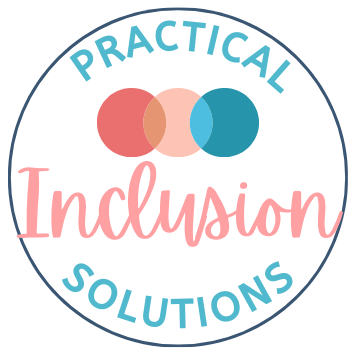Feeling stuck with traditional seating arrangements? Discover how flexible seating in an inclusive classroom can transform your classroom into a dynamic and inclusive learning environment!
Flexible seating enhances inclusivity by catering to diverse learning needs and preferences. Just like we each have our preferred way to sit and work, students benefit from a variety of seating options. We touched on flexible seating in our Classroom Organization post, but now let’s take a deeper dive into how it can transform your classroom.
Here’s how to use flexible seating to make your classroom accessible, comfortable, and successful for all students:
- Stand-Up Desks and Adjustable Height Tables
Stand-up desks and adjustable height tables let students switch between sitting and standing, helping those who need movement or find standing more comfortable. Adjustable heights accommodate different student sizes and preferences and are perfect for students who need to move frequently or have trouble staying seated.
- Wobble Chairs and Stability Balls
Wobble chairs and stability balls provide a dynamic seating option that helps students with ADHD or sensory needs stay focused. Wobble chairs have a rounded base for gentle movement and stability balls offer a bouncy, active seating choice. These flexible seating options enhance focus and provide sensory input to help students stay on task.
- Bean Bags and Soft Seating
Bean bags and soft seating create a comfortable space for reading, group work, or quiet time. They are ideal for students needing a calming environment. Soft seating is available in various sizes and shapes such as bean bags, floor cushions, and modular seating. They provide a cozy and inviting space for students who need a break from traditional seating.
- Floor Cushions and Mats
Floor cushions and mats offer a low-to-the-ground option for group activities or individual work and are great for students who prefer floor seating. They are portable, easy to store, and usable in different classroom areas. A benefit of these is that they are ideal for a relaxed setting, fostering engagement in activities like reading or group work.
- Mobile and Modular Furniture
Mobile and modular furniture provide seating that can be moved and reconfigured for various activities and group sizes. They include rolling chairs, movable desks, and modular seating arrangements. Mobile furniture offers flexibility, allowing the classroom layout to adapt to different needs and activities.
Flexible seating can make your inclusive classroom more welcoming and adaptable.
Interested in more tips? Check out these articles:
⭐️ How Flexible Classroom Seating Benefits Students
⭐️Designing Flexible Seating With Students
⭐️36 of the Best Flexible Seating Options for Today’s Classroom
How do you use flexible seating in your classroom? Share your experiences and tips in the comments or connect with us on Instagram @practicalinclusionsolutions!
